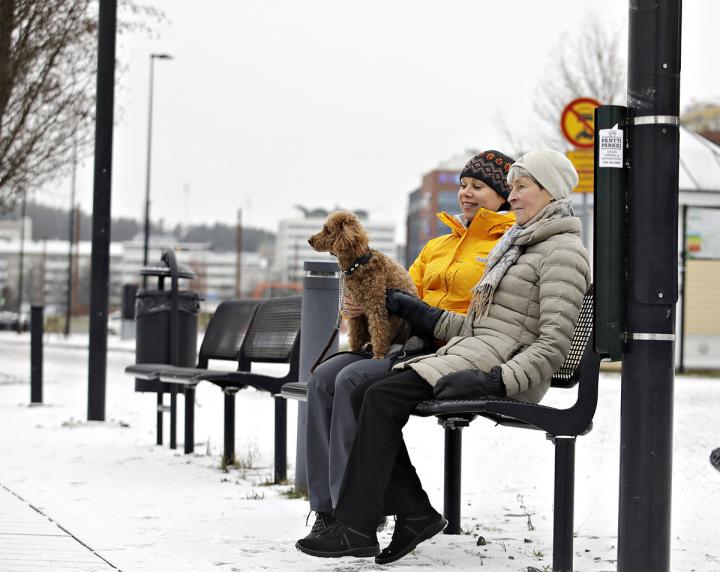Sex hormone levels, irregular menstrual cycles, menopausal symptoms, and life habits can be used for predicting the age at menopause

Credit: University of Jyväskylä
The natural menopause occurs when the menstrual periods cease due to the naturally decreased ovary function. There is a significant interindividual variation in the age at natural menopause but, on average, women undergo it around the age of 51 in Western countries. Furthermore, the length of the preceding menopausal transition, characterized by irregular menstrual cycles and menopausal symptoms, is also known to vary between individuals.
The study revealed that higher estradiol and follicle-stimulating hormone levels, irregular menstrual cycles, and menopausal symptoms are strong indicators of approaching menopause in middle-aged women. Additionally, information related to life habits, such as physical activity, alcohol consumption, and smoking, may provide useful information for assessing the time to natural menopause.
After the menopause, women can no longer get pregnant naturally, but the age at menopause has also been associated with the risk of several public health concerns such as cardiovascular disease, cancer, and osteoporosis.
“The prediction of the age at natural menopause is beneficial for health promotion with middle-aged and elderly women but it could also be useful for women making decisions related to family planning and treatments for menopausal symptoms,” explains doctoral researcher Matti Hyvärinen from the Gerontology Research Center and Faculty of Sport and Health Sciences, University of Jyväskylä.
The predictive models constructed in the study demonstrated adequate prediction accuracy with absolute errors of slightly over 6 months between the predicted and observed age at natural menopause in middle-aged women.
According to Hyvärinen, the results indicate that the approach used in the study may be used to develop a tool for assessing the age at natural menopause also for women in their 30s or early 40s in the future.
The study was carried out in the Gerontology Research Center and Faculty of Sport and Health Science at the University of Jyväskylä, Finland. It was part of the Estrogenic Regulation of Muscle Apoptosis (ERMA) study led by Academy Research Fellow Eija Laakkonen. The participants in the ERMA study were women between the ages of 47 and 55 living in the Jyväskylä region at the baseline. Participants that were perimenopausal during the baseline measurements were invited to the follow-up study, which included laboratory visits every 3 to 6 months until the participant was categorized as postmenopausal. The research has been funded by the Academy of Finland, European Commission, and Juho Vainio Foundation.
###
Media Contact
Matti Hyvärinen
[email protected]
Original Source
https:/
Related Journal Article
http://dx.




